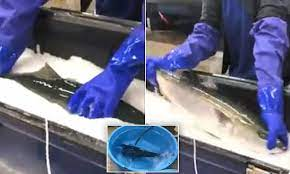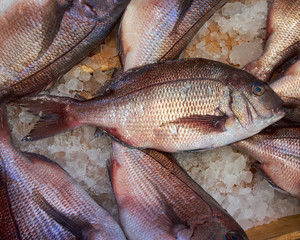Can you take frozen fish on a plane
With over 50,000 flights per day, the question of whether or not you can take your fish on a plane has been answered. Taking frozen fish on a plane can be tricky, to say the least.
Yes. You can take frozen fish on a plane. It’s not just a myth. Airlines often allow passengers to bring frozen foods, or as long as it’s packaged properly, there are tons of guides on packing frozen food. The reason why this is allowed is that airline regulations prohibit passengers from bringing certain foods on board, like meat or dairy. According to the U.S. Transportation Security Administration (TSA), frozen fish is a safe option because fish is a low-risk item. However, when purchasing a frozen fish fillet, check the packaging to make sure the fish is vacuum-sealed. The vacuum seal is crucial to ensure the fish remains fresh during transportation, which is one of the main reasons why airlines allow completely frozen fish. Ensure that the fish is frozen solid to avoid any issues with airport security when checking in coolers filled with fish.
A lot of people are nervous about traveling with frozen food . It’s actually easy. But it’s not as fun as it sounds. So here’s the truth about flying with frozen food, plus the best places to bring it, so you can get back to your day-to-day activities without any problems at all.

How much frozen food can you bring in checked bags on a plane?
Most airlines allow one piece of checked luggage per passenger, but some offer more (up to a maximum of four). For international flights remember to check customs rules for your destination country. Here’s a rough guideline: According to United Airlines’ website, carry-on baggage limits include any bag that fits underneath the seat in front of you and weighs less than 10 pounds (or half of your body weight), plus a laptop computer, a small purse, and a personal item. Anything else will count as carry-on luggage. Note that certain items, such as liquids, aerosols, gels, or deodorants, may be subject to weight restrictions. Also, note that many carriers impose additional fees for overweight bags. Bringing duct tape to secure your coolers after security checks is recommended to ensure your frozen fish remains safely packed during the flight. If you are bringing fish home after a fishing trip, consider using services offered by local businesses that can vacuum pack and prepare the fish for travel. These services often provide a vacuum seal, which is essential to keep the fish fresh during your journey.
If you are traveling, you will need to figure out which airline you are going to fly with. First, make sure that you purchase your tickets early so that you can find out which airline you are going to fly with. You should also check the baggage rules so that you can find out which size bag you are allowed to bring on the plane and can have ice packs in it. Make sure to check the airline’s website to see which items they allow you to bring. The next thing to do is to check what the airline allows you to carry on. There is a difference between carry-on and checked baggage. Usually, you can only carry one suitcase on a flight. However, you can carry many other things as long as you put them in checked luggage. If you are flying with a family member, make sure that they have a ticket so that they can travel with you.
Can I carry frozen fish in carry on in flight?
Can I Carry Fish in Flight? is one of the oldest questions ever asked about airline travel. I’m sure you’ve heard of it. I did too, but I never realized the answer was so simple you need to pack frozen food using a resealable plastic freezer bag. You can, but not very comfortably. Airline rules prohibit passengers from carrying any liquids or non-liquid food items in their carry-on checked bags, but the Transportation Security Administration (TSA) has made exceptions in the case of small, personal items. So, if you’re traveling with a fish, you can carry it. And if you’re traveling with a pet hamster or a small child, you can also bring them. However, the TSA doesn’t allow you to bring live snakes and lizards on planes. You’ll have to check them. And of course, they don’t allow knives. They also don’t allow glass bottles, though they’ll let you take a bottle of water through security.

There are two ways to transport fish. One is to carry the fish in a container that has some sort of mesh material inside of it. Some airlines require that you fill up the whole container. Others only allow enough room for a little bit of water. But the best way is to pack the fish in a plastic bag. Then, you put the bag into a cooler or other container and ensure the cooler shut tightly, often with duct tape, to comply with airline regulations. Make sure that you pack the bag tightly so the fish doesn’t move around. Make sure that the fish is packed in the bag completely and your food is frozen properly, your packs must be completely sealed with carbon dioxide solid. This includes the tail and the fins. The fish won’t be able to swim, and if it gets loose, you’ll have a problem. If you pack the fish correctly, then it should stay in the same position during the flight. The airline staff will be able to tell if you packed it completely.
To ensure the fish remains frozen, it is crucial to freeze the fish solid using dry ice.
Make sure that you pack the bag tightly and consider using a vacuum pack service to preserve the freshness of the fish. A vacuum seal is essential to ensure the fish remains fresh during the flight. The airline staff will be able to tell if you packed it completely.



